Special Report
Countries Where at Least Half the Population Wants to Move Away
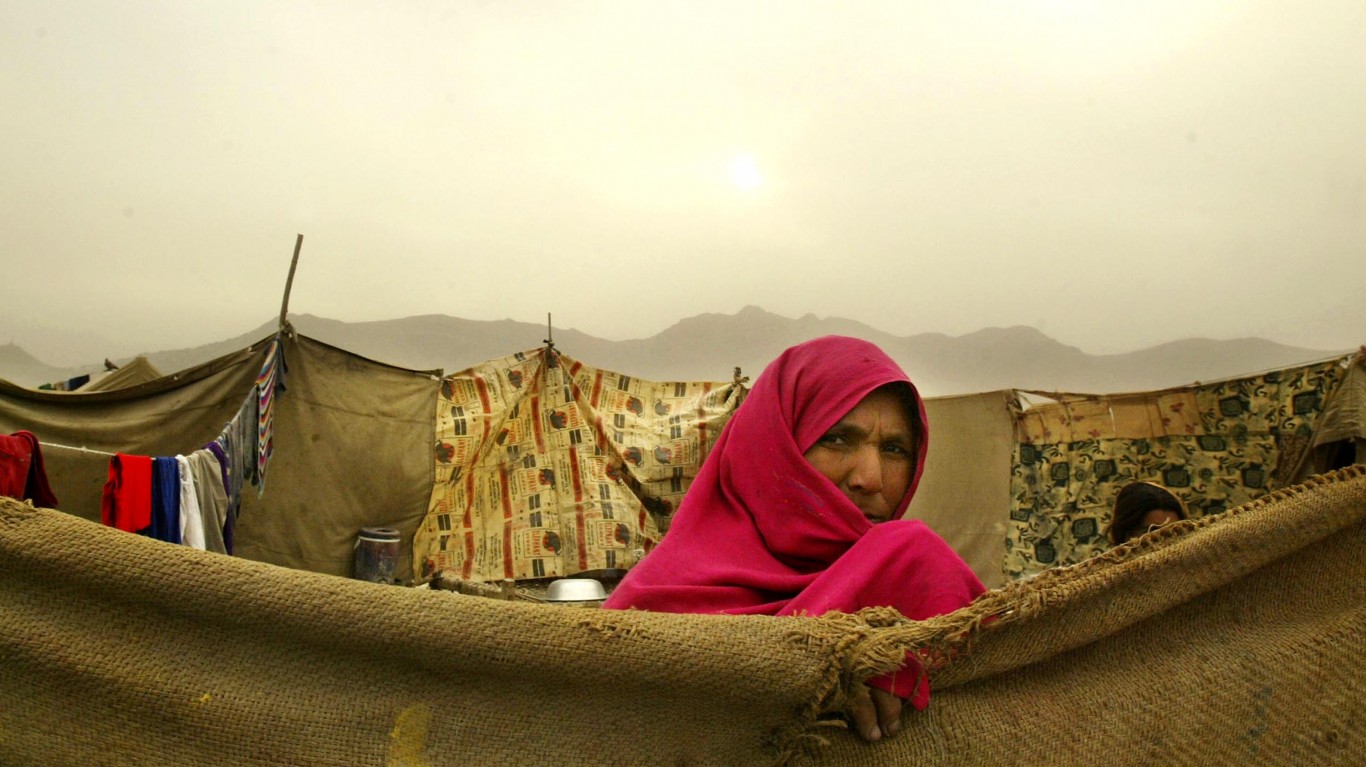
Published:

With one out of eight people in the world living on less than $1 a day, a commonly cited threshold that constitutes extreme poverty, hundreds of millions of adults desire to move to other countries than their own to find better opportunities. Tens of millions are planning an exodus within 12 months, according to polling company Gallup, including people taking perilous journeys through unauthorized routes, often facilitated by criminal human-trafficking gangs.
Poverty and high unemployment, especially youth unemployment, are major factors for these migrations. Other factors like state oppression, administrative and government corruption, internal conflicts, and all-out war add to the pressure to leave. Migrants often relocate to nearby countries, but many dream of moving on to the wealthiest and most stable nations, notably countries in the European Union, Canada, and the United States – all viewed as safe refuges with ample job opportunities. (Learn where the most refugees arriving in the U.S. come from.)
To identify the countries where a large segment of the population – at least 45% – would like to move away, 24/7 Tempo reviewed a report called “Nearly 900 Million Worldwide Wanted to Migrate in 2021,” based on data collected in 2021 and published in January 2023 by the analytics company Gallup. For context, we obtained 2011 and 2021 population statistics from the World Bank.
Out of the 13 countries polled by Gallup with highest share of would-be emigrants, two have experienced slight decreases in population from 2020 to 2021: Albania, where 20% of men ages 15-29 are jobless, and Lebanon, which is suffering under an extreme economic crisis that sent inflation over 200% for the first half of last year.
Click here to read about the countries where at least half the population wants to move away
Conflict-ravaged Afghanistan and the Democratic Republic of Congo, as well as Honduras, where criminal gangs run rampant, are also on this list. Another is Kosovo, where 45% of poll respondents said they would like to leave their semi-recognized country, which has one of Europe’s highest rates of youth unemployment.
The country in which the highest percentage of the population wants to leave is the West African nation of Sierra Leone, where three out of four respondents said they’d like to move elsewhere. (Some people want to leave the United States, too. These are the 15 countries Americans are moving to the most.)

13. Kosovo
> Residents who would like to move to another country: 45.0%
> 2021 population: 1,786,038
> 2011 population: 1,791,000
> 10-year population change: -0.3% – #231 largest growth out of 266 countries
Since its declaration of independence from Serbia in 2008, Kosovo has had among the highest youth unemployment rates in the region, causing many Kosovars to seek out better opportunities in European Union countries by crossing international borders without authorization. From 2008 to 2018, more than 200,000 Kosovo citizens applied for asylum in the E.U., according to the European Policy Institute of Kosovo. Germany is a top destination, but many Kosovars are also seeking work in Croatia, which joined the E.U. in 2013, leading to an exodus there that depleted the Croatian labor force.
[in-text-ad]

12. Guinea
> Residents who would like to move to another country: 47.0%
> 2021 population: 13,531,906
> 2011 population: 10,527,712
> 10-year population change: 28.5% – #42 largest growth out of 266 countries
This West African nation has experienced considerable emigration thanks to widespread poverty, political instability and oppression, ethnic conflicts, and lack of basic utilities like electricity and piped fresh water. “Some people walk country by country until they get where they want to be,” says M., a young woman who left Guinea in 2015 and ended up in the United States after spending time in Morocco, speaking to Borgen Magazine in 2021 on the condition her name not be published. Many Guineans hope to find their way to Europe or North America via Côte d’Ivoire, Mali, Senegal, Morocco, and Algeria.

11. Ecuador
> Residents who would like to move to another country: 47.0%
> 2021 population: 17,797,737
> 2011 population: 15,237,728
> 10-year population change: 16.8% – #97 largest growth out of 266 countries
Ecuadorians have increasingly been risking the perilous journey north as the Covid-19 pandemic has wrecked the country’s fragile economy, though their plight has been overshadowed by the mass exodus of people from the Northern Triangle countries of El Salvador, Guatemala, and Honduras. U.S. Customs and Border Protection data shows that the number of Ecuadoreans they have been apprehended or expelled jumped to 97,074 in the 2021 fiscal year ending in September, up from 12,892 in FY2020. In the first four months of the current fiscal year (October to January), that figure hit 44,630 encourters.
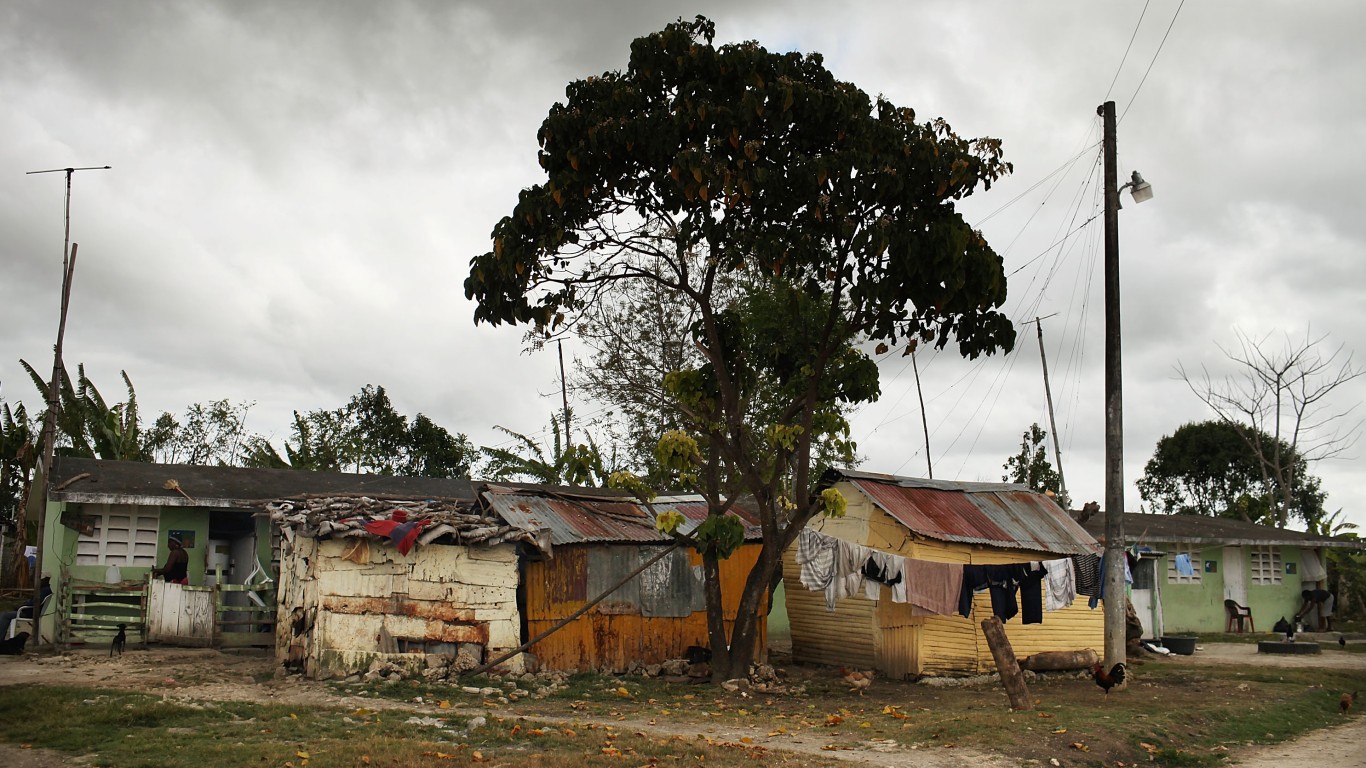
10. Dominican Republic
> Residents who would like to move to another country: 50.0%
> 2021 population: 11,117,873
> 2011 population: 9,903,737
> 10-year population change: 12.3% – #126 largest growth out of 266 countries
Dominicans make up the fourth-largest Hispanic immigrant group in the U.S., after Mexicans, Salvadorans, and Cubans, according to the Migration Policy Institute. Most Dominicans live in the Bronx and Manhattan, followed by New Jersey, Florida, and Massachusetts, and D.R. immigrants most often utilize family-sponsorship for legal migration to the U.S., leading them to arrive in areas that have traditionally been destinations for previous generations. In contrast to their Caribbean neighbors from Haiti and Cuba, no Dominicans have been apprehended or expelled for attempting to enter the country without authorization since at least 2020, according to U.S. Customs and Border Protection data.
[in-text-ad-2]
9. Albania
> Residents who would like to move to another country: 50.0%
> 2021 population: 2,811,666
> 2011 population: 2,905,195
> 10-year population change: -3.2% – #247 largest growth out of 266 countries
U.K. prime minister Rishi Sunak announced that he would crack down on the number of Albanians coming to his country amid a spike in the number of immigrants from the Adriatic coastal country between Montenegro and Greece. It’s “crystal clear that Albania is a safe country,” Sunak said. One in five Albanians youths (ages 15-29) are unemployed. Albanian migrants, most of them work-seeking single adult men, are applying for asylum, often arriving by boats crossing the English Channel, and often facilitated by Albanian gangs operating in France and Spain, according to the U.K. National Crime Agency. France has by far received the most asylum requests from Albanians. France and the U.K. have granted a majority of these asylum requests, mostly for women and children, according to the BBC.
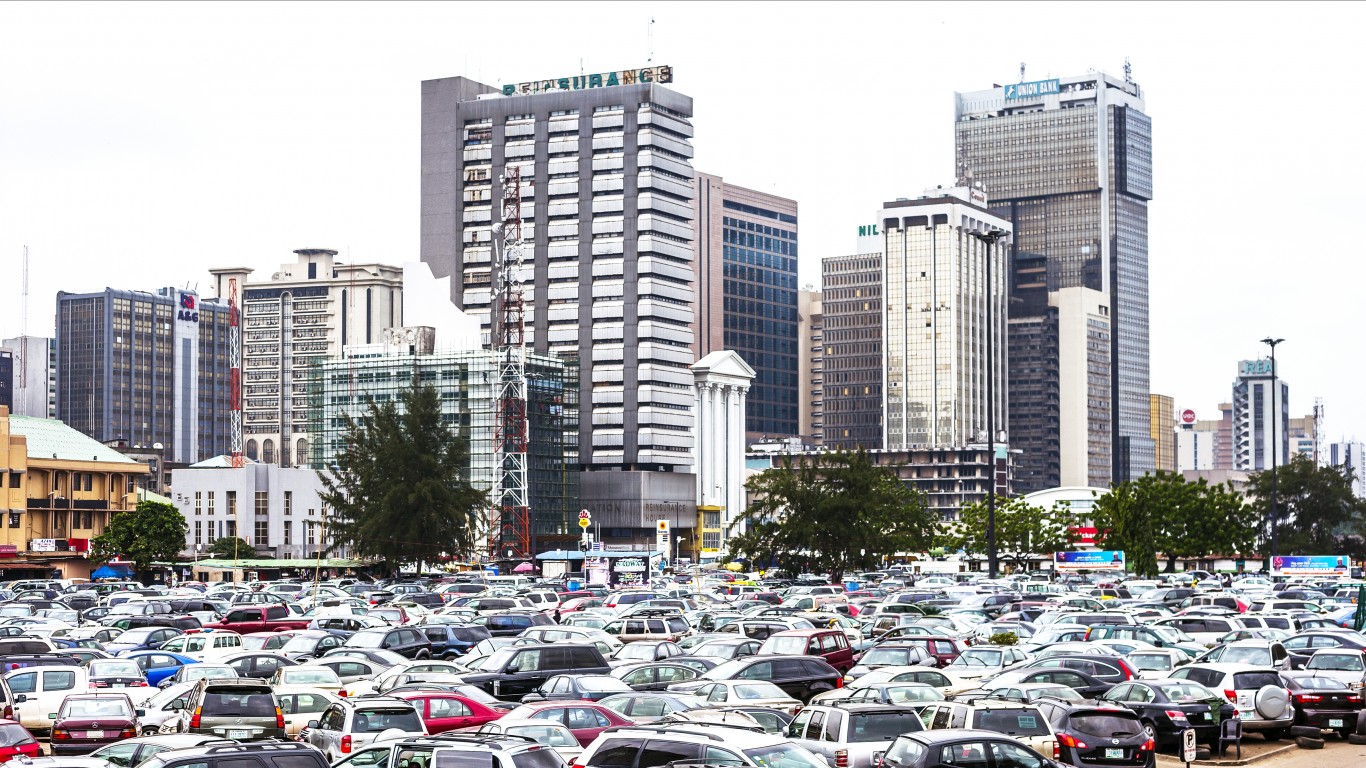
8. Nigeria
> Residents who would like to move to another country: 53.0%
> 2021 population: 213,401,323
> 2011 population: 165,463,745
> 10-year population change: 29.0% – #41 largest growth out of 266 countries
Africa’s largest country by population, with the continent’s biggest economy, is embroiled in a fight against insurgents in the northeast, who regularly target civilians for abductions and killings, as well as conflicts between farmers and herders in other parts of the country, according to the U.N. Refugee Agency. These conflicts, coupled with poverty, high unemployment, heavy-handed security forces, and administrative corruption lead many Nigerians to seek refuge elsewhere. Nigerians are among the largest groups of E.U. asylum seekers. In 2018, the Associated Press reported that between 10,000 and 30,000 Nigerian escorts work in Italy, including minors, many of them paying off debts owed to human traffickers and pimps.
[in-text-ad]

7. Ghana
> Residents who would like to move to another country: 53.0%
> 2021 population: 32,833,031
> 2011 population: 26,205,941
> 10-year population change: 25.3% – #57 largest growth out of 266 countries
Ever since Ghana declared the “Year of Return” in 2019, a program aimed at attracting Black Americans to the country where many Africans were forcibly loaded onto ships headed to the New World from the 16th through 19th centuries, at least 1,500 Black Americans heeded the call and relocated to the West African country. But those American immigrants are a small group compared to the much larger number of Ghanaians leaving for economic reasons. Until the 1980s, more people arrived in Ghana than left. This reversal was started by an economic collapse in the 1970s and continues to this day because of high unemployment. By 2015, Ghanaians were the 11th-most common nationality arriving to Europe by unapproved and dangerous maritime routes.

6. Democratic Republic of Congo
> Residents who would like to move to another country: 53.0%
> 2021 population: 95,894,118
> 2011 population: 68,654,269
> 10-year population change: 39.7% – #9 largest growth out of 266 countries
Ravaged by decades of conflict, the Democratic Republic of Congo has one of the most complicated humanitarian crises in Africa, according to the U.N. Refugee Agency. It has the world’s fourth-largest number of internally displaced people, and more than a million Congolese have sought asylum in other countries on the continent. The DRC itself has a half million refugees from neighboring countries that are also mired in conflict. Considering these conditions, it should be no surprise that most Congolese want to leave.
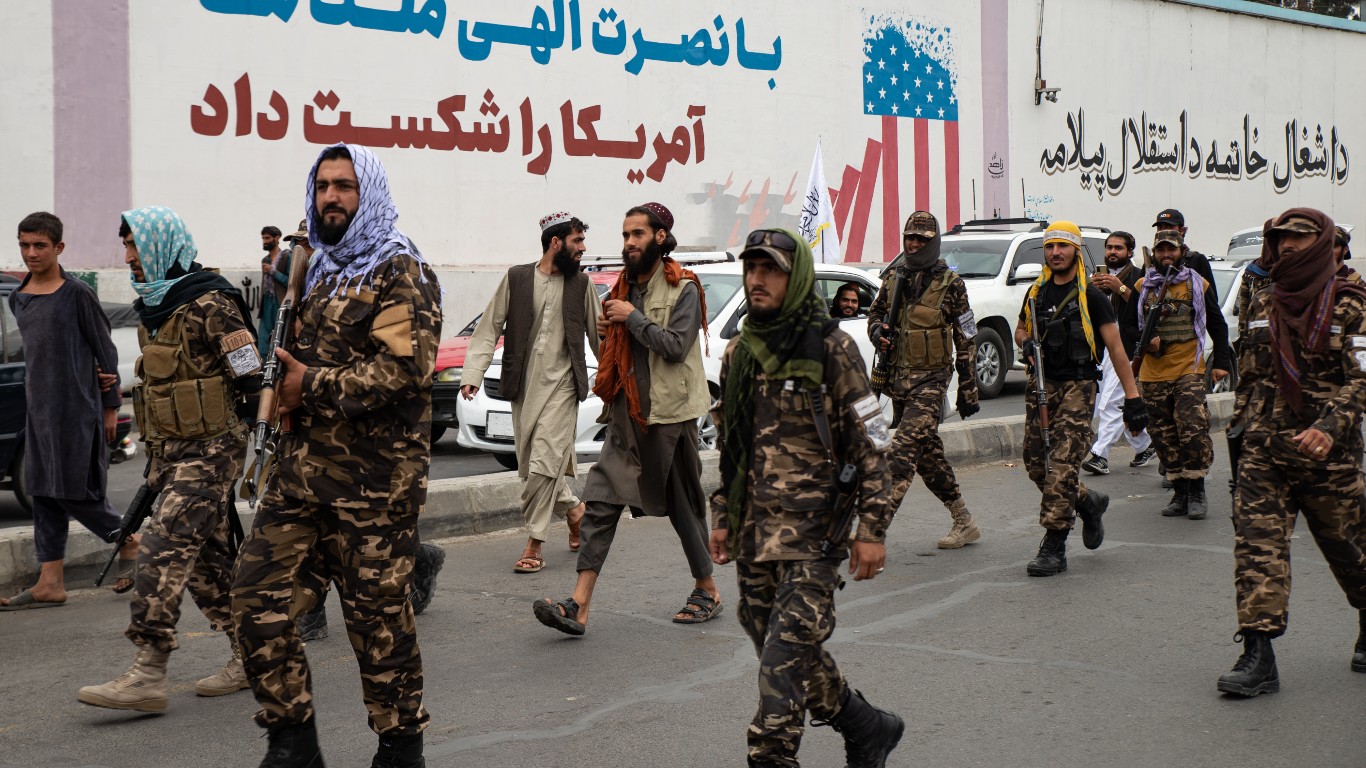
5. Afghanistan
> Residents who would like to move to another country: 53.0%
> 2021 population: 40,099,462
> 2011 population: 29,249,157
> 10-year population change: 37.1% – #13 largest growth out of 266 countries
Following the recently ended 20-year war fought by the U.S. in Afghanistan, the United Nations estimates that 24 million Afghans are in need of humanitarian assistance, including six million who were forced to flee their homes and another 2.7 million who have become refugees in 98 countries. The Taliban’s return to power, which began after the U.S. withdrawal in August 2021, has intensified instability and violence as the Islamic fundamentalist group continues to consolidate its power. Afghans are among the top three displaced populations after Syrians and Venezuelans.
[in-text-ad-2]
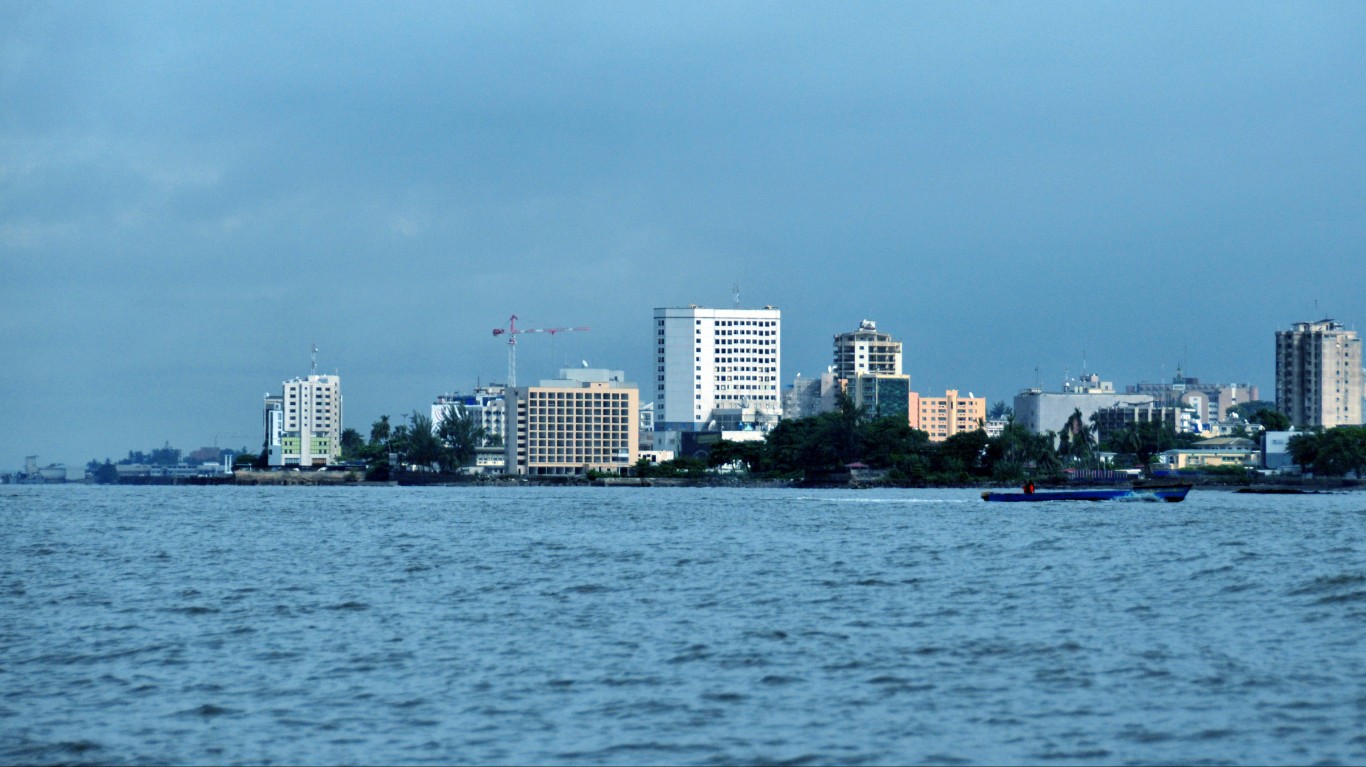
4. Gabon
> Residents who would like to move to another country: 55.0%
> 2021 population: 2,341,179
> 2011 population: 1,772,500
> 10-year population change: 32.1% – #28 largest growth out of 266 countries
This small West African country suffers from the so-called resource curse, the paradox where countries with an abundance of natural resources often experience low economic growth, more political oppression, and less development than countries with fewer natural resources. In Gabon’s case, oil is the main commodity, which not only puts the country at the mercy of global price fluctuations but has contributed to extreme income inequality. Administrative and political corruption doesn’t help. Since gaining independence from France in 1960, Gabon has only had three presidents. In 2009, Ali Bongo Ondimba took over the office after the death of his father, Omar Bongo, who ruled the country for more than 40 years.

3. Honduras
> Residents who would like to move to another country: 56.0%
> 2021 population: 10,278,345
> 2011 population: 8,622,504
> 10-year population change: 19.2% – #85 largest growth out of 266 countries
Out-of-control criminal gangs and the economic impact of the Covid-19 pandemic has created a humanitarian crisis in Honduras, leading its people to be the largest nationality group attempting to cross the southern U.S. Border in 2021. Though the U.S. Customs and Border Protection has recorded fewer encounters (apprehensions and expulsions) with Honduran migrants – 214,975 in the last fiscal year compared to 321,149 in FY2021, the numbers are way above the 43,357 encounters in FY2020, a figure that’s almost been matched in the first three months of the current fiscal year that began Oct. 1.
[in-text-ad]

2. Lebanon
> Residents who would like to move to another country: 63.0%
> 2021 population: 5,592,631
> 2011 population: 5,045,056
> 10-year population change: 10.9% – #142 largest growth out of 266 countries
An economic meltdown that began in 2019 and was exacerbated by the global pandemic has worsened Lebanon’s long-standing political instability. Inflation topped a staggering 200% for much of last year while the country’s currency has lost about 97% of its value against the dollar, decimating household budgets and plunging more than three quarters of the population into poverty. A Gallup poll in 2021 found that nearly nine out of ten people in the country are finding it “difficult” or “very difficult” to get by, while more than half say that they have lacked money for food at least once in the previous 12 months. It’s no wonder Lebanese are looking for exits.
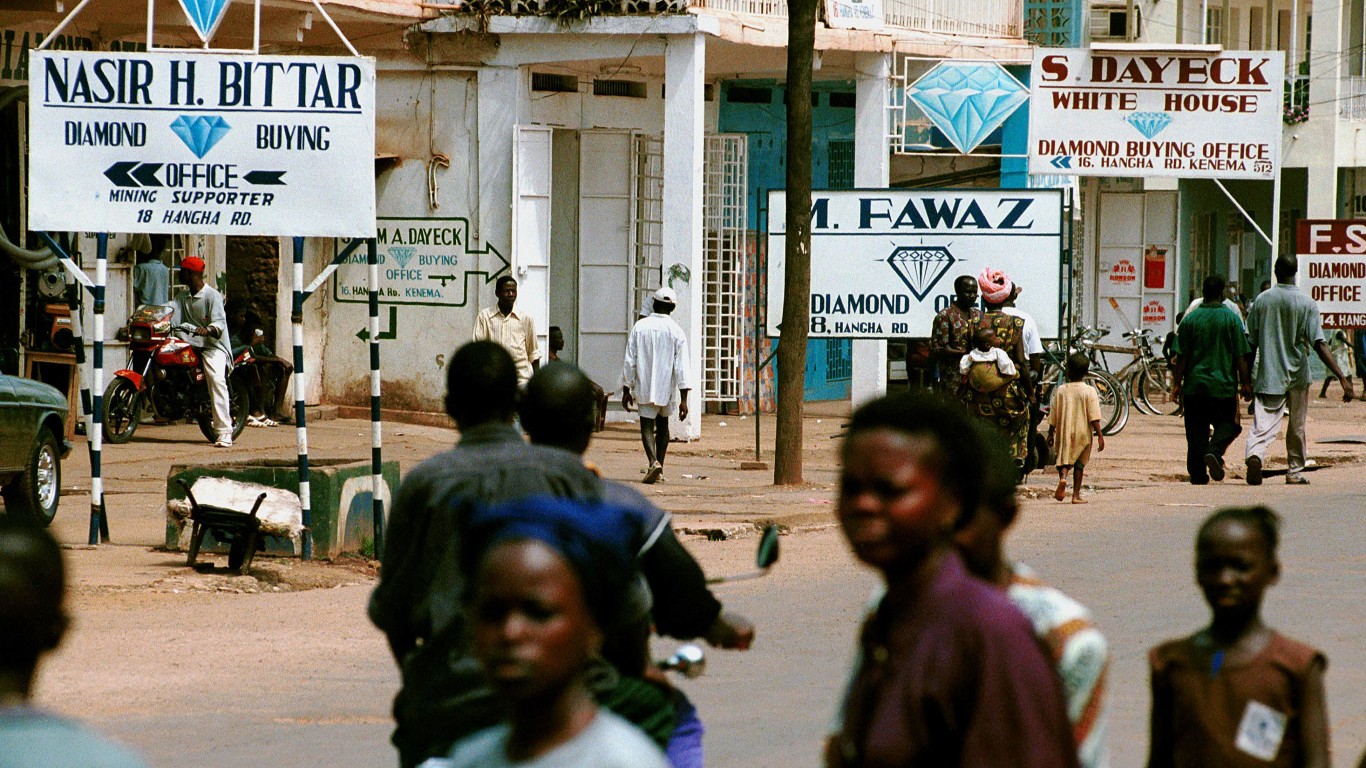
1. Sierra Leone
> Residents who would like to move to another country: 76.0%
> 2021 population: 8,420,641
> 2011 population: 6,612,385
> 10-year population change: 27.3% – #49 largest growth out of 266 countries
With one of the highest youth unemployment rates in Africa and facing colossal development challenges, Sierra Leone leads the world in the share of its population that says it would like to leave the country in pursuit of better economic opportunities and public safety. The top destinations for the country’s emigrants are nearby countries, including Guinea and Nigeria, two other nations on this list. Sierra Leoneans are also aiming for the United Kingdom, followed by other European countries. The economy and levels of development are still largely unchanged after the country emerged from a civil war in 2002.
Thank you for reading! Have some feedback for us?
Contact the 24/7 Wall St. editorial team.